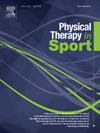Current clinical management of Achilles tendinopathy by Spanish physiotherapists: An observational study
IF 2.2
3区 医学
Q1 REHABILITATION
引用次数: 0
Abstract
Objectives
The purpose of this study was to explore how Spanish physiotherapists manage Achilles tendinopathy and to evaluate the alignment of their practices with established clinical guidelines.
Design
A cross-sectional online survey of Spanish physiotherapists.
Setting
Clinical environment.
Participants
Four hundred thirty-four physiotherapists completed the survey.
Methods
An online survey was administered to Spanish physiotherapists between March and April 2024. The survey collected data on clinicians’ demographics, treatment approaches, and preferences. Descriptive analysis was performed, with nominal and ordinal data analyzed through frequency counts.
Results
Valid responses were received from 434 physiotherapists with a mean age of 32 years (IQR = 15, range 22–60). Exercise and education were the most used treatments (94 % and 78 % of respondents respectively), although there was variability in their implementation. However, a significant proportion of Spanish physiotherapists (64 %) reported using invasive techniques, which may reduce the time spent on evidence-based interventions (p = 0.001) for the management of Achilles tendinopathy.
Conclusions
Spanish physiotherapists generally follow clinical guidelines for managing AT, with exercise and education as the main interventions. Despite the limited evidence, invasive techniques and manual therapy (74 %) are widely used. Future research should clarify the impact of this practice in the Spanish population.
西班牙理疗师对跟腱病的临床治疗现状:观察研究
目的本研究的目的是探讨西班牙物理治疗师如何处理跟腱病,并评估他们的做法与既定临床指南的一致性。设计西班牙物理治疗师的横断面在线调查。SettingClinical环境。共有434名物理治疗师完成了调查。方法于2024年3月至4月对西班牙物理治疗师进行在线调查。该调查收集了临床医生的人口统计数据、治疗方法和偏好。进行描述性分析,通过频率计数分析标称和序数数据。结果共收到434名物理治疗师的有效回复,平均年龄32岁(IQR = 15,范围22-60)。运动和教育是最常用的治疗方法(分别为94%和78%的受访者),尽管在实施过程中存在差异。然而,相当大比例的西班牙物理治疗师(64%)报告使用侵入性技术,这可能减少用于跟腱病管理的循证干预的时间(p = 0.001)。结论西班牙物理治疗师一般遵循临床指南管理AT,以运动和教育为主要干预措施。尽管证据有限,但侵入性技术和手工疗法(74%)被广泛使用。未来的研究应该阐明这种做法对西班牙人口的影响。
本文章由计算机程序翻译,如有差异,请以英文原文为准。
求助全文
约1分钟内获得全文
求助全文
来源期刊

Physical Therapy in Sport
医学-康复医学
CiteScore
4.50
自引率
8.30%
发文量
125
审稿时长
39 days
期刊介绍:
Physical Therapy in Sport is an international peer-reviewed journal that provides a forum for the publication of research and clinical practice material relevant to the healthcare professions involved in sports and exercise medicine, and rehabilitation. The journal publishes material that is indispensable for day-to-day practice and continuing professional development. Physical Therapy in Sport covers topics dealing with the diagnosis, treatment, and prevention of injuries, as well as more general areas of sports and exercise medicine and related sports science.
The journal publishes original research, case studies, reviews, masterclasses, papers on clinical approaches, and book reviews, as well as occasional reports from conferences. Papers are double-blind peer-reviewed by our international advisory board and other international experts, and submissions from a broad range of disciplines are actively encouraged.
 求助内容:
求助内容: 应助结果提醒方式:
应助结果提醒方式:


